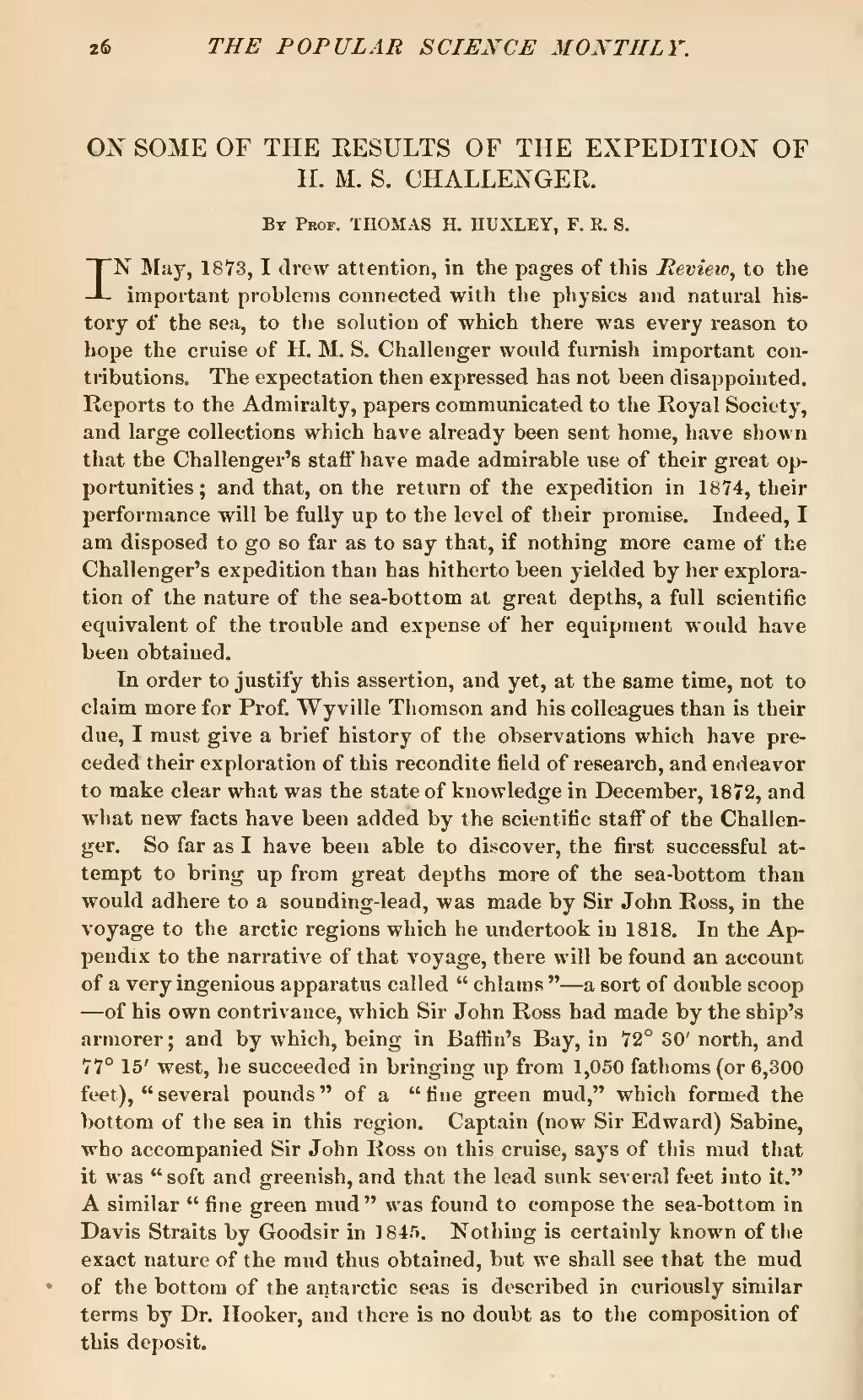| ON SOME OF THE RESULTS OF THE EXPEDITION OF H. M. S. CHALLENGER. |
By Prof. THOMAS H. HUXLEY, F. R. S.
IN May, 1873, I drew attention, in the pages of this Review, to the important problems connected with the physics and natural history of the sea, to the solution of which there was every reason to hope the cruise of H. M. S. Challenger would furnish important contributions. The expectation then expressed has not been disappointed. Reports to the Admiralty, papers communicated to the Royal Society, and large collections which have already been sent home, have shown that the Challenger's staff have made admirable use of their great opportunities; and that, on the return of the expedition in 1874, their performance will be fully up to the level of their promise. Indeed, I am disposed to go so far as to say that, if nothing more came of the Challenger's expedition than has hitherto been yielded by her exploration of the nature of the sea-bottom at great depths, a full scientific equivalent of the trouble and expense of her equipment would have been obtained.
In order to justify this assertion, and yet, at the same time, not to claim more for Prof. Wyville Thomson and his colleagues than is their due, I must give a brief history of the observations which have preceded their exploration of this recondite field of research, and endeavor to make clear what was the state of knowledge in December, 1872, and what new facts have been added by the scientific staff of the Challenger. So far as I have been able to discover, the first successful attempt to bring up from great depths more of the sea-bottom than would adhere to a sounding-lead, was made by Sir John Ross, in the voyage to the arctic regions which he undertook in 1818. In the Appendix to the narrative of that voyage, there will be found an account of a very ingenious apparatus called "chlams"—a sort of double scoop—of his own contrivance, which Sir John Ross had made by the ship's armorer; and by which, being in Baffin's Bay, in 72° 30' north, and 77° 15' west, he succeeded in bringing up from 1,050 fathoms (or 6,300 feet), "several pounds" of a "fine green mud," which formed the bottom of the sea in this region. Captain (now Sir Edward) Sabine, who accompanied Sir John Ross on this cruise, says of this mud that it was "soft and greenish, and that the lead sunk several feet into it." A similar "fine green mud" was found to compose the sea-bottom in Davis Straits by Goodsir in 1845. Nothing is certainly known of the exact nature of the mud thus obtained, but we shall see that the mud of the bottom of the antarctic seas is described in curiously similar terms by Dr. Hooker, and there is no doubt as to the composition of this deposit.
